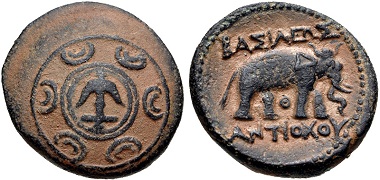A cownapper as royal role model
On 10 March 2014, an octodrachm of the Edones tribe will be auctioned off at Gorny & Mosch featuring on its obverse Hermes who, after just being born, stole the cattle from Apollo. One wonders why King Getas chose that scene to be depicted on his coins.

















